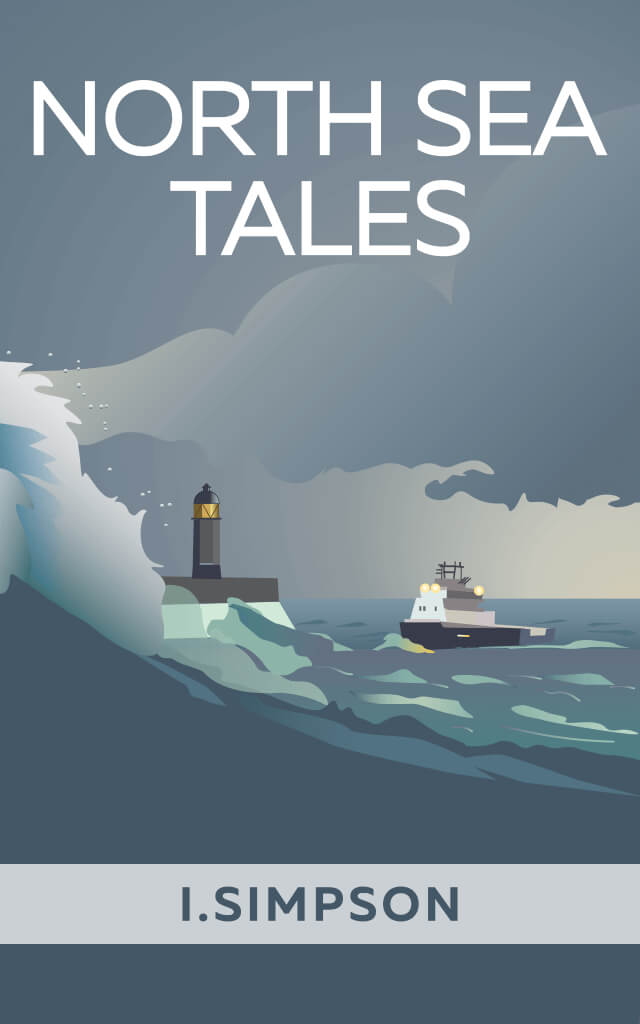North Sea Tales

Adventurous Departure from Aberdeen Harbour
With nothing more to be said between the two professionals in the wheelhouse, the operation of leaving port commenced. The remaining lines were cast off.
The ship deftly manoeuvred away from the quayside and followed the fast pilot boat, away from the dock.
To a layman, the boat looked like it was going the wrong way, as it manoeuvred through the harbour past all the obstructions and quays and large ships, in reverse, going astern. The reason was practical, these supply vessels had 2 steering positions, one at the front, bow side of the wheelhouse, and one at the stern of the wheelhouse.
From the stern the Skipper had the best view of the vessel overall, and he could position the ship better, to avoid obstacles, etc.
Once the ship was clear of the challenges of navigating in the confined spaces, it swung around rapidly in the last harbour basin, and pointed bow first up the entrance challenge. The graceful pirouette of the vessel, only matched, by the internal wheelhouse ballet performed by the bridge team.
The Skipper powerfully thrust the ship into its controlled spin, then put the controls to “Zero.”
As the ship gracefully spun on the spot, with wind and tide carefully taken into account, the “Bridge Synchronised Dancing Team” moved as one, shutting down aft control stations, in sequence, and starting forward ones, in a careful sequence, so, by the time the ship was pointing bow first up the channel, the Skipper was in position to apply just the correct thrust, to stop the spin turn, and head smoothly out the channel.
Years of experience made this manoeuvre seem effortless, but many a “Ballet” had turned into a “Circus” when controls hadn’t transferred correctly and the beautiful ballet, had become more of a “drunken clog dance” with people shouting and tripping over each there rushing back and fore, and chaotically trying to stop the disorientating spin, before hitting some poor fisherman returning with his catch, or worse still running aground blocking the channel.
So, we were in the channel…
On the aft deck, the laborious task of stowing the ropes below decks was now finished. Small hatches in the deck, led to the steering gear space below, and the heavy ropes of up to 200 metres in length were hauled by hand, and coiled neatly below, by the second Mate, and by one of the deck crew. 800 metres of ropes plus heaving lines, plus ancillary shite, and anything left lying about, had to be stowed away neatly and securely below, away from where the N.Sea could inflict its damage.
Cold heavy, brutal work, against time, as the hatches had to be shut, and the decks secured before the seas, started to take effect on the vessel. Trying to get anything done, whilst being thrown about by the extreme motion of the vessel, was asking for trouble, which could endanger your life, and the safety of the entire ship.
The solitary “Hotshot” container had been secured, strangled, lashed and secured by wires, squeezing it against the large barriers that surrounded the aft deck.
© 2021 I.Simpson. All Rights Reserved. Duplication, copying, printing without the consent of the author is prohibited.






